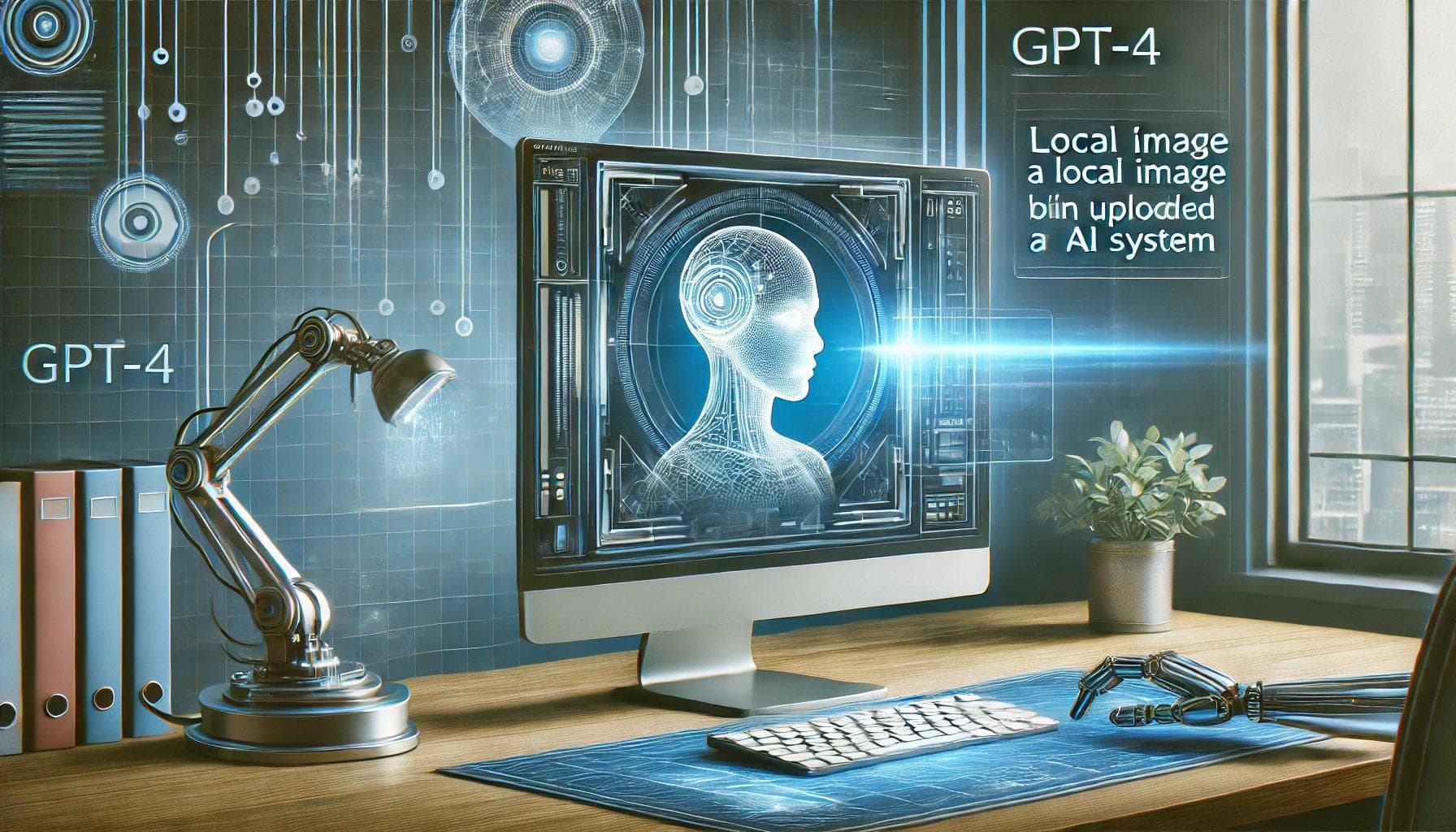|6 min reading
How to Load Local Images into GPT-4 Vision API – A Complete Guide

Don't Miss This Free AI!
Unlock hidden features and discover how to revolutionize your experience with AI.
Only for those who want to stay ahead.
How to Load Local Images into GPT-4 Vision API
As AI continues to revolutionize industries, GPT-4’s vision capabilities offer developers powerful tools for integrating image processing into their applications. This guide will walk you through the process of loading local images into GPT-4 via its API, providing clear steps, complete code examples, and essential considerations to maximize efficiency.
Contents
- Understanding GPT-4 and Its Vision Capabilities
- Setting Up Your Environment
- Steps to Load a Local Image to GPT-4
- Complete Sample Code
- Key Considerations
- FAQs
- Conclusion
Understanding GPT-4 and Its Vision Capabilities
What is GPT-4?
GPT-4, developed by OpenAI, is the latest version in the Generative Pre-trained Transformer series. Its standout feature is the ability to process both text and images, enabling applications like:
- Image classification
- Object detection
- Scene understanding
- Text extraction from images
These capabilities make GPT-4 a versatile tool for a wide range of use cases.
Vision Capabilities
GPT-4’s vision module interprets visual data, offering developers the ability to:
- Analyze images
- Generate insights based on visual inputs
- Combine textual and visual data for advanced applications
Setting Up Your Environment
Before loading an image into GPT-4, ensure your environment is properly set up. Here’s what you’ll need:
Programming Language
Python is highly recommended due to its simplicity and robust libraries for API interactions.
Required Libraries
Install the following libraries:
pip install requests Pillow
API Key
Obtain your OpenAI API key from your account dashboard. This key will be used to authenticate your requests.
Steps to Load a Local Image to GPT-4
Step 1: Import Necessary Libraries
Begin your script by importing essential libraries:
import requests from PIL import Image import io
Step 2: Open the Local Image
Load the image you want to process:
image_path = 'your_image_path_here.jpg' # Update with your image’s path with open(image_path, 'rb') as image_file: image_data = image_file.read()
Step 3: Prepare the API Request
Create the request payload to send your image:
API_URL = 'https://api.openai.com/v1/images/gpt-4-vision' headers = { 'Authorization': f'Bearer YOUR_API_KEY', # Replace with your actual API key 'Content-Type': 'application/json', } data = { 'image': image_data, }
Step 4: Send the Request
Make a POST request to the API:
response = requests.post(API_URL, headers=headers, json=data)
Step 5: Handle the Response
Capture and process the API response:
if response.status_code == 200: result = response.json() print("Response:", result) else: print("Error:", response.status_code, response.text)
Complete Sample Code
Here’s the complete Python script:
import requests from PIL import Image import io image_path = 'your_image_path_here.jpg' # Replace with your image’s path API_URL = 'https://api.openai.com/v1/images/gpt-4-vision' headers = { 'Authorization': f'Bearer YOUR_API_KEY', # Replace with your API key 'Content-Type': 'application/json', } with open(image_path, 'rb') as image_file: image_data = image_file.read() data = { 'image': image_data, } response = requests.post(API_URL, headers=headers, json=data) if response.status_code == 200: result = response.json() print("Response:", result) else: print("Error:", response.status_code, response.text)
Key Considerations
File Size and Format
- Use supported formats like JPEG or PNG.
- Ensure the file size complies with API limits to avoid errors.
Error Handling
- Implement error handling to manage failed requests gracefully.
- Use detailed logging for debugging purposes.
API Rate Limits
- Be mindful of usage limits and avoid exceeding them to maintain service availability.
FAQs
Q1: What image formats are supported by GPT-4?
A: Supported formats typically include JPEG and PNG. Refer to the API documentation for any updates.
Q2: How can I get my OpenAI API key?
A: Sign up on OpenAI’s website and navigate to your account’s API section to generate a key.
Q3: What should I do if I encounter an error response?
A: Check the error code and message. Review the API documentation for troubleshooting steps or adjust your request accordingly.
Q4: Is there a limit on image size?
A: Yes, the API imposes size limits. Ensure your image meets these requirements to avoid issues.
Q5: How can I optimize image quality for better results?
A: Use clear, high-resolution images with minimal noise and irrelevant elements.
Conclusion
The integration of GPT-4’s vision capabilities into your projects unlocks a world of possibilities in AI-powered applications. By following this guide, you can seamlessly load local images into GPT-4, ensuring smooth operation and maximizing the potential of its vision API. With proper setup, clear images, and adherence to best practices, you’ll be well-equipped to harness the power of AI-driven image processing.
Start experimenting today and pave the way for innovative AI applications that combine the power of text and image analysis!
Related Articles

Over 100 Inspiring Vacation Messages and Quotes for Every Travel Theme
Discover over 100 vacation messages and quotes for adventure, relaxation, culture, and more. Ignite your wanderlust and ...

Kuki AI: The Art of Immersive Conversation
Discover how Kuki AI revolutionizes digital conversations with natural language processing, cross-platform integration, ...

100+ Adorable Happy Sunday Messages to Brighten Your Day
Discover over 100 heartwarming Happy Sunday messages and quotes to share with loved ones. Spread positivity and joy ever...

20 Heartfelt Advance Wedding Wishes to Warm the Couple's Hearts
Discover 20 heartfelt advance wedding wishes to warm the couple's hearts
Latest Articles

AI Clothing Remover Understanding the Reality Ethical Risks and Safer AI Use
Learn what AI clothing remover means, why it raises ethical and legal concerns, and how responsible AI platforms promote...

Sushi AI: What It Means and How AI Is Changing Sushi Restaurants
Discover what Sushi AI means, how AI is used in sushi restaurants, smart ordering, menus, and how AI tools like Merlio h...

Sakura AI Review: Features, Pricing, Safety, Privacy, Limits & Better Alternatives
Explore Sakura AI in detail. Learn features, pricing, safety, privacy, message limits, and whether Sakura AI is worth us...
